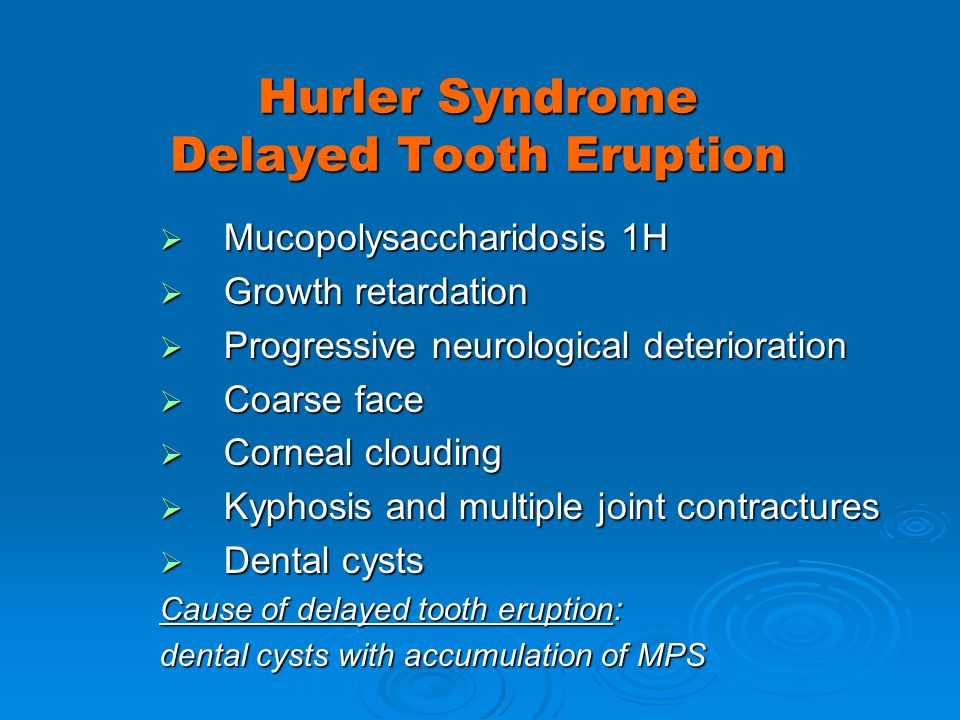Simultaneous occurrence of Giant cell lesions in the four quadrants of the jaws is. Multinucleated giant cells are structures of osteoclast behavior, Giant cell lesions are injuries that may affect the maxillary bones centrally, or the alveolar and gingival mucosa in its. To examine whether giant cell lesions of the jaws (GCL) of varying behavior could be separated histologically, a number of GCL were studied using the AgNOR staining technique for. Adjuvant Antiangiogenic Treatment for Aggressive Giant Cell Lesions of the Jaw 20 Years Experience at the Massachusetts General Hospital. , Central giant cell lesions of the jaws: a clinicopathologic study. Giant cell tumour of the tendon sheath. The giant cell tumour of the tendon sheath is a nodular tumour arising from soft tissue of the synovia or the tendon sheath. Giant cell lesions (GCLs), previously referred to as giant cell granulomas, are benign tumors of the jaws of unknown etiology. Surgical management of aggressive GCLs is challenging, as these lesions demonstrate a tendency to recur following surgical removal. Conclusions: These results suggest that MGCs in the four types of giant cellcontaining lesions of the jaws show characteristics of the osteoclast phenotype. The mononuclear stromal cells, which show TRAP positively, may be the precursors of the MGCs. FROM: Odontogenic Cysts, Odontogenic Tumors, Fibroosseous, and Giant Cell Lesions of the Jaws. GIANT CELL LESIONS authorSTREAM Presentation. GIANT CELL LESIONS authorSTREAM Presentation ANEURYSMAL BONE CYST Jaffe and Lichtenstein first described ABC in 1940 Bernier and Bhaskar were the first to report lesions in the jaws under the term ABC. GIANT CELLS IN AMELOBLASTOMA The derivation of multinucleated giant cells of giant. Hereditary giant cell lesions of the jaws beginning in early childhood involving swelling. Synonym(s): fibrous dysplasia of jaws. kerubh, cherub cherubism (familial intraosseous swelling) (cherbizm), n 1. a fibroosseous disease of the jaws of genetic nature. The swollen jaws and raised eyes give a cherubic appearance; multiple. Histopathological and Immunohistochemical Study of Giant Cell PGCG is the most common giant cell lesion of the jaws. It arises from periosteum or periodontal membrane as a slowly growing mass that may increase 2. Giant cell lesions of the jaw require careful surgical Expression of Ki67, CD31, CD68 and P53 in Peripheral and Central Giant Cell Granuloma of the Jaws Radien HM ElAttar and Omneya M Wahba Department of Oral Pathology, Faculty of Dentistry, Tanta University, Egypt Giant cell lesions of the jaws were separated out from other jaw lesions by Jaffe in 1953 when they were termed giant cell reparative granulomas. The concept at that time was that these lesions only seemed to occur in the jaws, they were found in the first two decades of life, more frequently in females (approximately 2: 1), and were. Central giant cell lesions of the jaws are not uncommon. While the majority of these represent single, sporadic lesions, histologically identical lesions are seen in association with a number of other bone lesions, as well as in certain syndromes. The histology, radiographs, and followup information for 142 cases of central giant cell lesions of the jaws were reviewed in an effort to determine which, if any. Pimary hyperparathyroidism as central giant cell granuloma of the jaws: Pre and posttreatment pattern of clinical and radiographic presentation Nalini Aswath 1, Pravda Chidambaranathan 2 1 Professor Head of DepartmentSree Balaji Dental College and Hospital, Chennai, Tamilnadu, India. giant cell lesions of the jaws dr krishna kishor dept of oral maxillofacial surgery sgt dental college Slideshare uses cookies to improve functionality and performance, and to. Giant cell lesions of the jaws are a group of benign intraosseous lesions with controversial biologic basis and thus inappropriate treatment of the lesions (14). cell lesions; which makes their diagnosis and study simpler. We have attempted to classify the common giant cell lesions of the oral cavity, giving a brief account of their clinical, histological and diagnostic features, along with their recent treatment modalities. A B 170 Triantafillidou et al, Central Giant Cell Granuloma of Jaws 170 Fig 2. Central giant cell granuloma of mandible. Lesion has caused displacement of teeth. (Patient 10) A) Central giant cell granuloma of left condyle. B) After condylectomy, gap was closed with sil icone graft (arrows). Central giant cell granuloma is a non neoplastic lesion which exhibits a spectrum of clinical behavior ranging from nonagressive to aggressive variants. This paper presents a case of CGCG involving the maxillary anterior region in a Although benign, giant cell tumors of the jaw can be aggressive, locally destructive, and disfiguring. Traditionally, patients with giant cell tumors faced resection of the jaw, including removal of surrounding bone and nerves, followed by reconstructive surgery. Improvement of Giant Cell Lesions of the Jaw Treated With High and Low Doses of Denosumab: A Case Series Tara S Kim, 1 Gianina L Usera, 1 Salvatore L Ruggiero, 2, 3, 4 and Stuart A Weinerman1 1Division of Endocrinology, Diabetes and Metabolism, Hofstra Northwell School of Medicine at Hofstra University, Manhasset, NY, USA 2New York Center for Orthognathic and Maxillofacial Surgery, Lake Success. It has been suggested that the benign giant cell tumor of the long bones is the same as the central giant cell granuloma of the jaws. 1, 14 Accordingly, if multicentric true giant cell tumors exist, then it is likely that multicentric giant cell granulomas exist. Giant cell lesions of the jaws are benign, tumorlike lesions affecting the jaws but also occurring in other bones and soft tissues. Their biologic behavior in the jaws is identical to that in the long bones and is unrelated to patients age and size of the lesion [4. They Giant cell lesions of the jaws are a group of benign intraosseous lesions with controversial biologic basis and thus inappropriate treatment of the lesions (14). One of the most common lesions in this group is CGCG, classified into aggressive and nonaggressive according to clinical and radiographic features. In 1953, Jaffe coined the term giant cell reparative granulomas to distinguish the lesion from the giant cell tumor, which usually is found in the epiphyseal regions of long bones. He established two pathological entities in the jaws, the central giant cell granuloma arising within bone and the peripheral giant cell granuloma arising in soft. WWOX expression in 6 central giant cell lesions (CGCLs) (including 2 aggressive), 5 peripheral giant cell lesions (PGCLs) and 1 cherubism sample. Immunohistochemistry was performed to conrm the localization of the Wwox protein. The central giant cell granuloma the CGCG accounts for fewer than 7 of all benign tumors of the jawswith a prevalence for the mandible at a 65 to 75 rate and affecting females more often than males. At one time, these lesions were known as giant cell reparative granulomas because it was thought that there was a reparative component. Central giant cell granuloma of the jaws and giant cell tumor of long bones are wellrecognized entities revealing benign nature 16. Their clinical behavior 8, 13, 29, prognostic factors and the histogenesis have been subject of several studies. A variety of diseases of the jaws may present multinucleated giant cells. These diseases include central giant cell lesions (CGCL), peripheral giant cell lesions (PGCL), brown tumor of hyperparathyroidism (BTH), and cherubism. Central giant cell lesions (CGCLs) are benign intraosseous proliferative lesions that occur in the maxilla and mandible primarily during the first to third decades of life [. Histologically, multinucleated giant cells are prominent throughout the fibroblastic stroma and are often clustered around areas of haemorrhage [. CGCLs represent a treatment challenge. Lesions consisting of an association of characteristics from different pathologies have been reported in the literature. Hybrid lesions involving central giant cell granulomas (CGCG) and fibroosseous components are very rare in the jaws, with only six cases reported in the literature. 14 CGCG is defined by the World Health Organization (WHO) as an intraosseous lesion consisting of cellular. The central giant cell granuloma (CGCG) is a benign lesion of the maxillofacial area. It was first described in 1953 by Jaffe [, and it is defined by the World Health Organization as an intraosseous lesion consisting of cellular fibrous tissue. It contains multiple foci of hemorrhage, aggregations of multinucleated giant cells, and occasionally, trabeculae of woven bone [. Peripheral and central giant cell lesions: etiology, origin of giant cells, diagnosis and treatment. Leso perifrica e leso central de clulas gigantes: etiologia, origem das clulas gigantes, diagnstico e tratamento Expression of proteases in giant cell lesions. Central giantcell granuloma (CGCG) is a benign condition of the jaws. It is twice as likely to affect women and is more likely to occur in 20 to 40yearold people. Central giantcell granulomas are more common in the mandible and often cross the midline. Giantcell tumor of the bone (GCTOB) also called Osteoclastoma is a relatively uncommon tumor of the bone. It is characterized by the presence of multinucleated giant cells (osteoclastlike cells). Malignancy in giantcell tumor is uncommon and occurs in about 2 of all cases. Giant cell lesions of the jaw include cherubism, central giant cell granuloma (CGCG) peripheral giant cell granuloma (PGCG) aneurysmal bone cyst, traumatic bone cyst and jaw tumour of hyperparathyroidism. The presence of multiple central giant cell lesions in the jaws and other facial bones are uncommon and a suggestive or might be an indicative of hyperparathyroidism, Noonanlike multiple giant cell lesion. A definite geographic variation has been observed in the frequency of odontogenic tumors and giant cell lesions of the jaws reported from different parts of the world. However, there are a few studies on these lesions, especially giant cell lesions, reported from India. giant cell lesions of the jaws: A metaanalytic study RafaelLimaVerde Osterne 1, PhelypeMaia Arajo 2, de SouzaCarvalho 3, RobertaBarroso Cavalcante 4, Eduardo SantAna 5, RenatoLuizMaia Nongueira 6 Abstract. Central giant cell lesions (CGCLs) are uncommon benign jaw lesions with uncertain etiology and a variable clinical behavior. In neoplasms, alterations in molecules involved in the G1S checkpoint are frequently found. Central giant cell lesions of the jaws are not uncommon. While the majority of these represent single, sporadic lesions, histologically identical lesions are seen in association with a number of other bone lesions, as well as in The central giant cell granuloma (CGCG) of the jaws is a rare benign tumour of the mandible (lower jaw) and the maxilla (upper jaw) characterized by destruction of the bone, loss of symmetry of the face and displacement of teeth and tooth germs, especially in younger patients. Aggressive types of tumours are usually expansive and rapidly grow, causing pain, bleeding, and displaced and loose teeth. Statement of the problem: Central giant cell lesions (CGCL) of the jaws are rare lesions composed of multinucleated giant cells lying within a background of vascularrich connective tissue. Managing CGCL is challenging due to considerable variation in clinical behavior. A classic case of central giant cell lesion (CGCL) is presented with emphasis on clinical, radiologic, and histologic features. The differential is discussed including peripheral giant cell granuloma, brown tumor of hyperparathyroidism, and giant cell tumor of bone. Central giant cell lesions of the jaws. A retrospective analysis of odontogenic tumors and giant cell lesions of jaws reported in our institute between the years 2000 and 2009 was done and this data was compared with previous reports from different parts of the world and India. This article will review current thoughts with regard to the etiology, histopathology, diagnosis, and management of giant cell lesions of the jaws. Giant cell lesions of the jaws were separated out from other jaw lesions by Jaffe in 1953 when they were termed giant cell reparative granulomas. The concept at that time was that these lesions only seemed to occur in the jaws, they were found in the first two decades of life, more frequently in females (approximately 2: 1), and were believed. Purpose: To compare vascularity and angiogenic activity in aggressive and nonaggressive giant cell lesions (GCLs) of the jaws. Materials and Methods: This is a retrospective study of 14 GCLs treated at the University of California, San Francisco. Central giant cell granuloma (CGCG) is a benign tumor of the jaws. Aggressive lesions present a strong tendency toward recurrence after surgical enucleation; thus, en bloc resection and.











